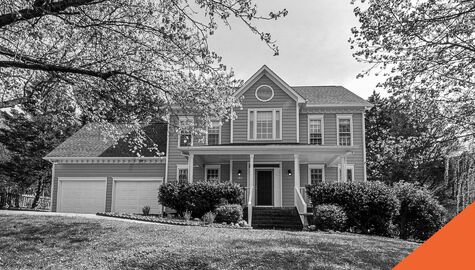What is Property and Casualty Insurance?
Tuesday, 27 February 2024
Life is a series of unexpected events, and it's often when we're caught off guard that insurance becomes invaluable. From unforeseen accidents to sudden property damage, the unpredictability of life emphasizes the importance of being prepared. Having Property and Casualty (P&C) insurance will allow you to stay protected in the face of these uncertainties.
With this insurance's amazing coverage, individuals and families have a reliable way to mitigate the financial risks associated with property damage, liability claims, and more. It's a proactive approach to "expecting the unexpected," providing peace of mind knowing that you have a safety net when life takes an unexpected turn.
In this blog, we will define Property and Casualty insurance, explore some available types, and review examples of instances where you may need it. Keep reading to learn more and stay protected for whatever life throws your way!
Transcript: What is Property and Casualty Insurance?
What is Property & Casualty Insurance?
So, what is Property and Casualty insurance? Also known as P&C, this insurance provides a foundation of security for individuals and families against unexpected events. From safeguarding homes and personal belongings to providing liability coverage, P&C insurance offers peace of mind in an unpredictable world. It consists of two main components: the property portion and the casualty portion.
Property
This portion covers various assets that individuals and families own. For families, this typically includes their home and its contents, such as furniture, appliances, and personal belongings. In the event of perils like fire, theft, vandalism, or natural disasters, the property portion of the insurance policy would provide coverage to repair or replace these items. For example, if a family's home is damaged by a fire, the insurance would help cover the costs of rebuilding or repairing the structure and replacing damaged belongings like furniture and electronics.
Casualty
This deals with liability and legal responsibility. It provides coverage if an individual or family is found legally responsible for injuring someone else or damaging their property. For instance, if a family member accidentally causes a fire that spreads to a neighbour's property, the casualty portion of their insurance would cover the costs of the neighbour's property damage and any resulting medical bills if someone is injured.
Types of Property and Casualty Insurance
Fortunately, various types of P&C insurance exist, meaning individuals and families have ample opportunity to ensure they have the right coverage for their assets. Let's explore some of the most common types:
Homeowners Insurance
Homeowners insurance protects your home and its contents against damage or loss from covered perils. This includes events like fire, theft, vandalism, and certain natural disasters. Additionally, it typically provides liability coverage in case someone is injured on your property.
Car Insurance
Car insurance is a legal requirement in Canada. It covers your vehicle against damage or theft, as well as liability if you're responsible for injuring someone or damaging their property in an accident. There are different levels of coverage, from basic liability to comprehensive plans that also cover your vehicle.
Condo Insurance
Condo insurance is tailored for condominium owners, covering personal belongings, improvements made to the unit, and liability. While the condo association's insurance typically covers the building structure, condo insurance fills the gaps, ensuring your specific unit and belongings are protected.
Renters Insurance
Renters insurance is crucial for tenants, as it covers personal belongings against theft, fire, and other perils. It also provides liability protection in case someone is injured in your rental unit. If you're renting a property, renters insurance can offer peace of mind by safeguarding your possessions.
Power Sports Insurance
Power sports insurance is essential for those with recreational vehicles like ATVs, snowmobiles, or boats. This coverage protects your vehicle against damage, theft, and liability while you're enjoying your outdoor adventures.
Landlord Insurance
Landlord insurance is designed for property owners renting out their homes or units. It covers the building structure, loss of rental income, and liability and can also include coverage for landlord-specific risks like vandalism or damage caused by tenants.
Examples of P&C Insurance in Action
Property and casualty coverage can come in many forms in the insurance world. Below are some examples of how your insurance will work to protect you in times of need.
Your Apartment Gets Broken Into
If your apartment experiences a break-in, Property and Casualty insurance, specifically renters insurance, can offer crucial assistance. Renters insurance protects tenants' personal belongings and provides liability coverage. Should a break-in occur, renters insurance can help cover the cost of replacing stolen or damaged items, such as electronics, furniture, clothing, and more. Renters insurance also often includes coverage for damages to the apartment, like broken windows or doors.
A Visitor Gets Injured in Your Home
Most home insurance policies also cover medical payments to others, meaning regardless of fault, the insurance provider can cover the injured person's medical bills up to a certain limit. In case of a lawsuit, homeowners insurance can cover your legal defence costs, including attorney fees and court expenses. It's important to be aware of the limits and exclusions of your policy, such as maximum amounts for medical expenses or specific situations that may not be covered.
You Rear-end Another Vehicle
Let's say you're involved in an accident where you hit another vehicle at a stoplight. Your auto insurance's property damage liability coverage would step in to cover the costs of repairing your vehicle and the other car if you are at fault. If the other driver suffered injuries from the incident, your insurance could also help pay for any medical bills they incur as a result of your actions.
Your House is Damaged From a Weather-Related Incident
If your house sustains damage from a weather-related incident, your home insurance can be an essential source for recovery. Should a storm cause damage to your dwelling, insurance can help cover the cost of repairs or rebuilding, including structural damage to the house itself and damage to personal belongings inside. Certain issues, such as damage from earthquakes or floods, may not be covered, so reviewing your policy to confirm your protections is best.
You’re Forced to Move Due to Repairs
Whether you own a house or rent, if you are displaced from your home because damage has made it uninhabitable, your insurance will cover you. For example, a fire could cause serious damage that requires significant repairs, forcing you to seek shelter elsewhere before moving back in or finding a new permanent residence. In this situation, additional living expenses (ALE) can help cover the costs of temporary living arrangements. This includes expenses like hotel stays, meals, and even storage for your belongings.
Insurance Made Easy with BIG
As you can see, Property and Casualty offers peace of mind and a safety net when life takes an unexpected turn. Whether protecting your home from weather-related damage, covering medical expenses for an injured visitor, or helping you through temporary displacement, P&C insurance ensures you can navigate life's uncertainties with confidence and financial security.
For more information on which types of P&C insurance are best suited for your situation, contact a BIG broker. They will provide expert advice and shop for quotes from BIG’s network of property and casualty insurance companies to help you save on the best coverage available.



